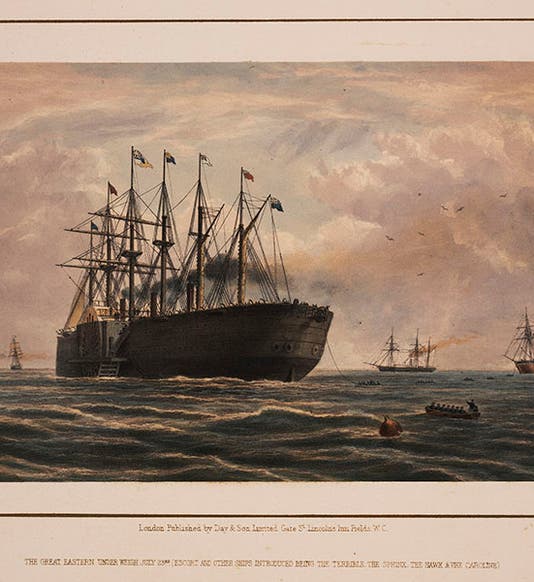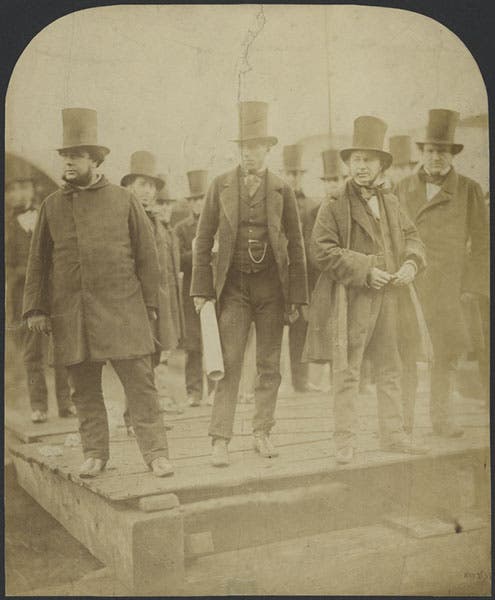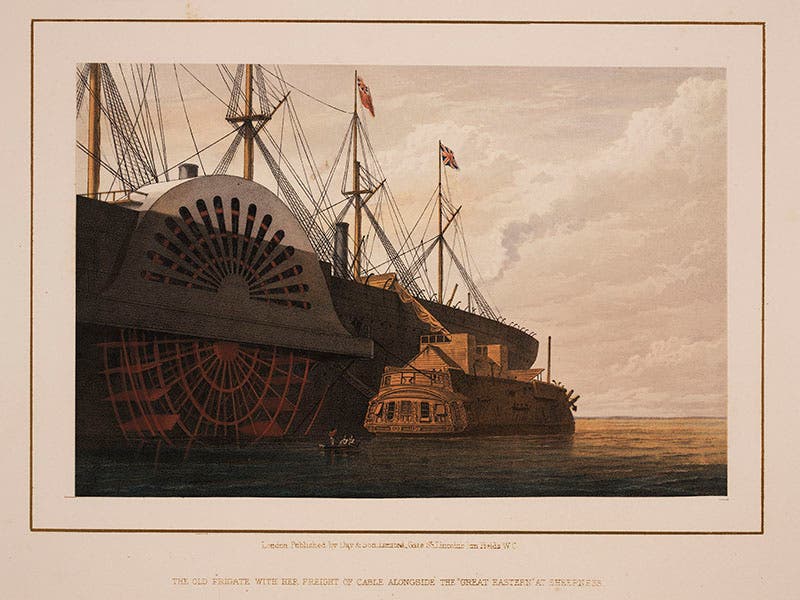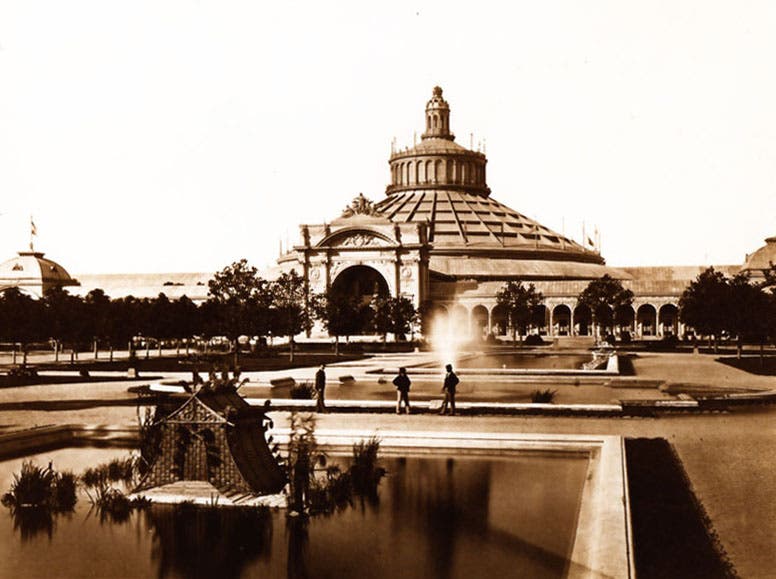Scientist of the Day - John Scott Russell
John Scott Russell, a Scottish naval engineer, was born May 9, 1808. Russell was the ship-builder who was responsible for realizing Isambard Kingdom Brunel's dream of building a gigantic iron-clad trans-oceanic steam-powered vessel, the SS Great Eastern. Russell was the foremost ship architect of his day, and it was natural that Brunel would seek his collaboration to construct the largest ship ever built.
But the partnership was troublesome from the beginning. Brunel was extremely prickly, especially when he thought that he wasn't receiving proper credit, and a newspaper story of 1855 that overly-praised Russell’s role in building the ship aroused Brunel's suspicions that Russell was pulling an end-around with the press. The situation worsened when Russell proved to be financially inept and his ship-building firm went bankrupt before the ship was half-completed. Historians have had a field day trying to determine who was at fault in this failed relationship, Brunel or Russell, and both have their partisans, right down to the present day.
But the fact is, the Great Eastern WAS built and launched, incorporating Russell's hull designs and paddle-wheel engines. The launch was a bit of a disaster, in that the Great Eastern proved too heavy to move, even for the mammoth winches that were in place, and that was really Brunel's fault – Russell had wanted to launch from dry dock. It took them three months, from the first attempt on Nov. 3, 1857, to the eventually successful one on Jan. 31, 1858, but at last, the Great Eastern was off and steaming. Robert Howlett, the famed Victorian photographer, recorded a memorable image of Russell and Brunel attending the first launch attempt, some distance apart, because they were no longer speaking (third image).
The Great Eastern held the record for being the largest ship ever built for half a century, but it wasn't noticeably successful as a passenger liner, although it could cross the Atlantic in 8 days or less. The most notable period of its short life (the ship was broken up in 1889) was participating in laying the first permanently-operational Atlantic Cable in 1865-66. We have a book in our collection about this operation, with 25 colored lithographs, several of them showing the Great Eastern or its innards, filled with immense tubs of coiled cable (first and fourth images).
Brunel died in 1859 and the immediate feud was over. Russell lived until l882. In 1873, Russell designed and built the marvelous Rotunde for the Vienna World’s fair of 1873, the largest cupola in the world for over a century, and built entirely of structural iron (sixth image). At the time it was considered as great a wonder as the Great Eastern, and far more useful.
Dr. William B. Ashworth, Jr., Consultant for the History of Science, Linda Hall Library and Associate Professor, Department of History, University of Missouri-Kansas City. Comments or corrections are welcome; please direct to ashworthw@umkc.edu.











